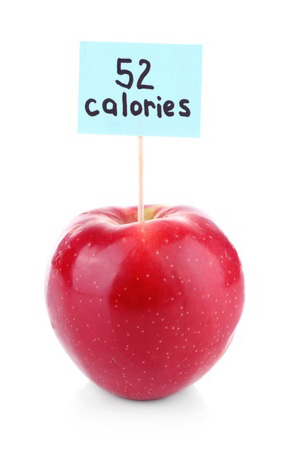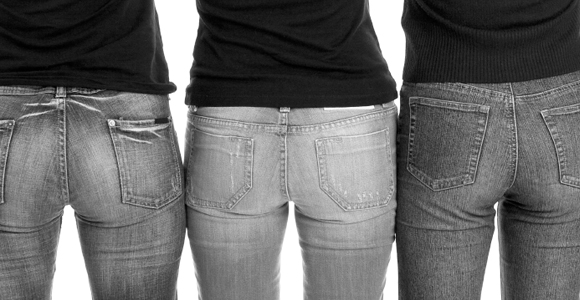How to Lose Weight by Restricting Calories
When it comes to losing weight, there is only one strategy that is absolutely guaranteed to work ?and that's to calculate the number of calories you're burning in a day and then eat less than that number. This way, you maintain a 'calorie deficit' which forces your body to burn fat for energy. If you keep this up, eventually you'll see the fat fade away and you'll be left with a toned and honed physique.
But straightforward though that may sound, the process of maintaining a deficit is actually significantly harder than it at first appears. Following then is a basic introduction to calorie counting that will help you to avoid the common pitfalls and grasp the basics.
How to Calculate Your Calories
 The first thing you'll need to do if you want to start maintaining a caloric deficit, is to work out just how many calories you're actually eating ?which will enable you to then know how many calories you need to consume (or avoid!) in order to maintain that deficit.
The first thing you'll need to do if you want to start maintaining a caloric deficit, is to work out just how many calories you're actually eating ?which will enable you to then know how many calories you need to consume (or avoid!) in order to maintain that deficit.
There are two easy ways to do this. The first is to use a fitness tracker such as the Microsoft Band that includes a constant heart rate monitor. These aren't perfectly accurate but nothing is. After a few weeks, they should be sufficient to give you a pretty good estimate of the calories you burn in a day.
Alternatively, if you don't have a fitness tracker and aren't interested in investing, an alternative method is to try working out your BMR and AMR.
A BMR is your 'Basal Metabolic Rate' which tells you how many calories you're burning on a daily basis even without doing any exercise. In other words, this is how many calories you need for blinking, breathing, digesting and sleeping.
To work this out, you can use one of the following formulae:
Women: 655 + (4.35 x weight in lbs) + (4.7 x height in inches) ?(4.7 x age in years)
Men: 66 + (6.23 x weight in lbs) + (12.7 x height in inches) ?(6.8 x age in years)
Or click here for BMR calculator.
Your AMR meanwhile is your 'Active Metabolic Rate' which is roughly the number of calories you burn taking into account the fact that you (hopefully) do some kind of activity generally. This should account for whatever work you do, for any explicit exercise, for household chores etc.
To work this number out, you're simply going to take your BMR and then multiply it by:
?1.25 for light/normal activity
?1.40 for daily activity
?1.60 for extensive training (think athlete, construction worker or marathon runner)
Think none of these describes you? Then you can always pick a number in-between.
Again, it's important to note that this number isn't going to be completely accurate, so you if you aren't sure, play the number down rather than up. As a guideline, the rough average is somewhere around 2,000 calories a day. If you're wildly above or below that, then something may have gone wrong!
Cutting Calories While Staying Healthy
Once you have this number, the great news is that as long as you stay below it, you will always be losing weight. The lower your calories in, the faster you will lose the weight but the harder it will be (i.e. you will feel hungry). A good aim is to shoot for something like 200-400 calories under your target. This way, you'll also be giving yourself a little wiggle room in case you 'accidentally' have a slice of cake but you won't be starving and exhausted the whole time either.
What's important though is that you get all of your nutrients at the same time as doing this and that you are eating healthily from all your food groups. The first thing to do is to try and split your caloric intake between your macronutrients ?and that means eating about 20-30% protein, 20-30% fat and 40-60% carbohydrates. The amount of each in any item can usually be found on the back of the packet and considering the following list can be helpful:
Fat: 9 calories
Protein: 4 calories
Carbohydrates: 4 calories
At the same time, it's crucial that you ensure you are getting all of your micronutrients. This means eating plenty of fruit and vegetables so that you are taking in vitamins and minerals. These will help you to prevent cravings, they will support your immune system and they will give you tons of energy. Focusing purely on calories in and out is a surefire way to make yourself unwell ?while you could theoretically lose weight by eating ice cream, it wouldn't be very healthy at all.
Avoiding 'simple carbs' generally is also a good idea. Not only are things like cake and white bread 'empty calories' but carbs also cause a spike in blood sugar that encourages fat storage and that increases hunger pangs. Eat 'cleaner' and you'll find that it's much easier to stick to your goals and that you feel healthier for many reasons too. The right nutrients will even support a healthier metabolism leading to more fat burning even when you're resting.
That said, don't fall into the easy trap of trying to restrict your fats too much to reduce calories. We actually need fats in our diet for a number of crucial functions ?and particularly for healthy brain function. And again, fats are also more satiating than carbs and will help to fuel us with energy throughout the day.
Simplifying the Process
So now you've got to calculate how many calories you're burning, you need to decrease the number of calories you eat and you need to calculate the total caloric intake every day along with the proportion of fats, carbs and protein? Then ensure you're getting enough of your micronutrients on top of that?
All sounds a little complicated and soul destroying, right?
Fortunately, there are a few things you can do to make this process easier. The first thing is to remember that you're currently at an equilibrium. If you aren't gaining weight at the moment but are staying at a fairly steady body shape, then that suggests that you are taking in roughly the same number of calories that you are burning. Theoretically then, increasing your exercise a little or reducing your calories just slightly should result in change in the right direction. This is a great way to get started without overcomplicating matters ?just start eating less and keep everything else the same!
If you struggle to eat less without starving then remember that exercise counts too ?just go for a daily 20 minute run and you'll automatically be about 200 calories 'in hand'.
Another tip is to think about the things that you are eating on a regular basis and to calculate those. If you start every day with the same cereal, then knowing the calories and macros for that meal can be a big help. You can do the same meanwhile for your favorite sandwich, or your daily protein shake.
And while it might not sound very fun, it can be helpful to stick to these meals throughout the day to again avoid overcomplicating matters. Eat the same breakfast and lunch most days and then you only have to calculate your evening meal. Better yet, if you ensure your breakfast and lunch are very under and you're 'generally sensible' with dinner, you may not need to calculate that at all.
-
Why do you need fibers in your diet plan?
In this article I will reveal some little known facts about the fi
-
Lose Belly Fat Fast with 2 Vital Secrets to Real Fat Loss
Do you struggle to lose belly fat? I bet youre thinking that youve
-
Modeling A New Years Resolution
Part of the problem with becoming a cost estimation aficionado, who th
-
A Look at Weight Loss Infomercials
Only in America could billions of dollars be made selling weight l
-
New Weight Loss Treatments Target the Brain
Losing weight is difficult. Much research has been devoted to developi
-
Lose Weight Fast in 6 Simple Healthy Way
You must feel overwhelmed with so many d
- DON'T MISS
- Weight Loss Pills: Miracle Working Drugs Or Just A Waste Of Money?
- NutriSystem Reviews - A Closer Look At The NutriSystem Meal Plans
- Reduce Weight By Checking Labels
- Fast Weight loss Diet – Simple Tips And Tricks
- Best Ways Of Getting Your Slim Body Back
- How to Lose Weight without Starving Yourself
- Protein shake – The fundamental points that you have to know from experts within the subject
- Ditch The Pills And Weight Loss Programs With This Advice
- Weight Loss Problems Why The Gastric Bypass Surgery Does Not Stick
- The New Superfoods for Weight Loss




